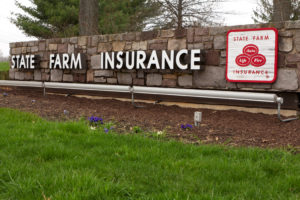
State Farm cuts auto claims costs $1.6B but brings in more in premiums
By onBusiness Practices | Insurance | Market Trends | Repair Operations
State Farm financials released Thursday indicate that the carrier’s auto insurance business made $2.8 billion more in premiums, cut auto claims and loss adjustment expenses $1.6 billion, but ended up $2.8 billion in the red.
Meanwhile, underwriting expenses — which include things like overhead, agents and ads — actually grew by $200 million from 2016’s $10.0 billion.
On the whole, the entire State Farm property and casualty business lost $1.7 billion pre-tax, up from $1.2 billion in 2016.
State Farm earned $41.6 billion in auto insurance premiums and paid out $34.2 billion in claims in 2017 versus $38.8 billion in premiums and $35.8 billion in claims in 2016. State Farm’s auto business lost $7 billion in 2016.
We emailed Thursday morning asking a State Farm spokesman about the insurer’s theory for the 4.5 percent reduction in claims cost — for example, Allstate reported a frequency decline in 2017 — and if the 7.2 percent increase in earned premiums could be attributed to more policyholders or higher rates. We also asked why expenses grew rather were reduced to help close the gap.
“State Farm has nothing additional to share with RDN,” spokesman Roszell Gadson wrote in an email.
State Farm’s financials are important data to have on hand for a customer — your auto insurer is making more but paying out less — when a State Farm adjuster attempts to deny legitimate expenses. It also might be valuable in the statehouse when a State Farm lobbyist tells lawmakers it cares about saving policyholders money as a defense for aftermarket parts and other questionable practices.
If claim costs are down but premium revenue is increasing anyway, then shouldn’t the policyholders paying into the system in good faith be getting more bang for their buck?
As we noted above, it’s unclear if State Farm’s increase in earned premiums can be attributed more to a rate increase or just more revenue from new customers signing up and starting to pay premiums.
But it seems like some of this is attributable to State Farm increasing rates in 2016 or 2017, or both. An undated consumer-facing blog post cites 2016 data explaining why the insurance industry has had to increase prices. State Farm attributed the higher rates to increased miles driven, distracted driving and rising repair bills.
Miles driven rose 1.2 percent in 2017. Distracted driving data wasn’t available for last year, but State Farm’s 2017 distracted driving survey report suggests some arguably more distracting phone usage among drivers had increased in 2016. Pew Research Center data found identical cellphone and smartphone concentration in 2016 and 2018, and distracted driving deaths fell in 2016, so it’s not clear yet if distracted driving will continue to push up auto insurance costs or if things will level out.
The price of auto body work did rise about 2.4 percent in 2017, slightly ahead of the overall 2.1 percent inflation rate, according to the Bureau of Labor Statistics.
The price of car insurance rose 7.7 percent last year, according to the BLS.
“Parking sensors, lane-departure warnings, and even stronger materials are now widely available on many vehicles,” State Farm wrote about auto body repair, “While those smarter sensors and stronger devices can help improve safety, they are also more expensive to repair. Since 2005, the cost of body work has risen nearly 40 percent more than overall inflation, and the size of collision claims increased 8.2 percent from 2014 to 2016.”
If State Farm acknowledges all of these items exist and is charging customers more in response, then its adjusters should have no problem paying for the procedures dictated by the manufacturer to restore such technology after a crash.
As for the statistics here, it’s worth noting that while the inflation rate between 2005-16 was 22.9 percent and body work costs did increase by 33.6 percent during that time, the cost of auto insurance rose 48.3 percent, according to the BLS.
The National Association of Insurance Commissioners doesn’t yet have 2016 collision-only premium data to check against the collision claim severity increase of 8.2 percent State Farm cited. However, we do know from the BLS that auto insurance costs overall rose 11.9 percent between 2014 and 2016.
Therefore, it appears that like State Farm, the insurance industry as a whole should have no problem keeping pace with auto repair costs — and even improving the quality and quantity of repairs “we pay for.”
More information:
“State Farm® Announces 2017 Financial Results”
State Farm, Feb. 28, 2017
“Industry-Wide Rise in Auto Insurance Rates”
State Farm, published 2016 or later
Featured image: The State Farm Northeast Zone operations center in Concordville, Pa., is shown April 10, 2011. (Micah Youello/iStock)
